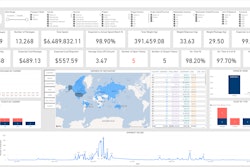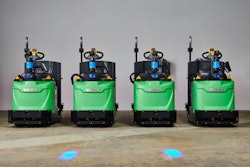
Gartner, Inc. has identified the top 8 supply chain technology trends in 2020.
Gartner analysts have selected strategic supply chain technology trends that have a high potential for positive impact on people, performance and industries. Some are now reaching critical tipping points in capability and maturity.
“The vast majority of organizations have a cautious approach to adopting supply chain applications and technologies,” said Christian Titze, vice president analyst with the Gartner Supply Chain Practice. “Only 21% are willing to consider, and often adopt, early-stage technologies. However, even cautious supply chain leaders must keep an open mind and embrace long-term perpetual change.”
The top supply chain technology trends in 2020 are:
Hyperautomation
Hyperautomation is a framework to mix and match a vast array of technologies in the best possible way - such as historic legacy platforms with recently deployed tools and planned investments. The term means different things for different organizations, so supply chain leaders must first find their individual definition. If deployed correctly, hyperautomation can encourage broader collaboration across domains and act as an integrator for disparate and siloed functions.
Digital Supply Chain Twin (DSCT)
A DSCT is a digital representation of the physical supply chain. It is derived from all relevant data across the supply chain and its operating environment. That makes the DSCT the basis for all local and end-to-end decision making.
“DSCTs are part of the digital theme that describes an ever-increasing merger of the digital and physical world,” Mr. Titze added. “Linking both worlds enhances situational awareness and supports decision-making.”
Continuous Intelligence
Continuous intelligence (CI) is one of the biggest opportunities for supply chain leaders to accelerate their organizations’ digital transformation. It leverages a computer’s ability to process data at a much faster pace than people can. Supply chain leaders - or other systems - can look at the processed data in near real-time, understand what is happening and take action immediately.
“There are already several use cases for CI in decision support and decision automation. For example, retailers utilize CI to automatically react to customer behaviors when they shop online. This enables better customer service, more customer satisfaction and tailored offers that lead to higher sales revenue,” Mr. Titze explained.
Supply Chain Governance and Security
This is an increasingly important macro trend, as global risk events are on the rise and security breaches impact companies on both the digital and physical level.
“Gartner anticipates a wave of new solutions to emerge for supply chain security and governance, especially in the fields of privacy as well as cyber and data security,” Mr. Titze said. “Think advanced track-and-trace solutions, smart packaging and next-gen RFID and NFC capabilities.”
Edge Computing and Analytics
The rise of edge computing - where data is processed and analyzed close to its collection point - coincides with the proliferation of Internet of Things (IoT) devices. It’s the technology you need when there is a demand for low-latency processing and real-time, automated decision making.
Edge computing is right now making its way into the manufacturing industry. For example, some organizations have adopted driverless forklifts for their warehouses. Heavy equipment sellers can use edge computing to analyze when a part needs maintenance or replacement.
Artificial Intelligence (AI)
AI in supply chain consists of a toolbox of technology options that help companies understand complex content, engage in natural dialogue with people, enhance human performance and take over routine tasks.
“AI technology is present in a lot of already existing solutions, but its capabilities evolve on a constant basis,” Mr. Titze added. “Currently, the technology primarily helps supply chain leaders solve long-standing challenges around data silos and governance. Its capabilities allow for more visibility and integration across networks of stakeholders that were previously remote or disparate.”
5G Networks
Compared to its predecessors, 5G is a massive step forward with regards to data speed and processing capabilities. The ubiquitous nature of 5G boosts its potential for supply chains. For example, running a 5G network in a factory can minimize latency and enhance real-time visibility and IoT capabilities.
Immersive Experience
Immersive experience technology, such as virtual, augmented and mixed reality, has the potential to radically influence the trajectory of supply chain management. Those new interaction models amplify human capabilities. “Companies already see the benefits of immersive experiences in use cases like onboarding new factory workers through immersive on-the-job training in a safe, realistic virtual environment,” Mr. Titze concluded.














